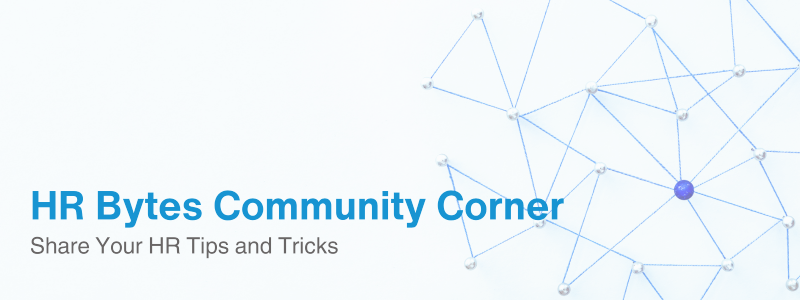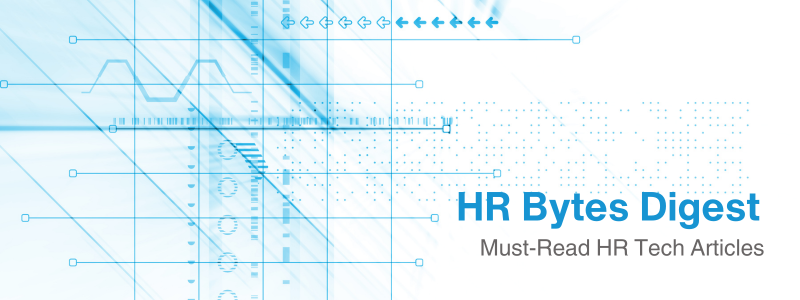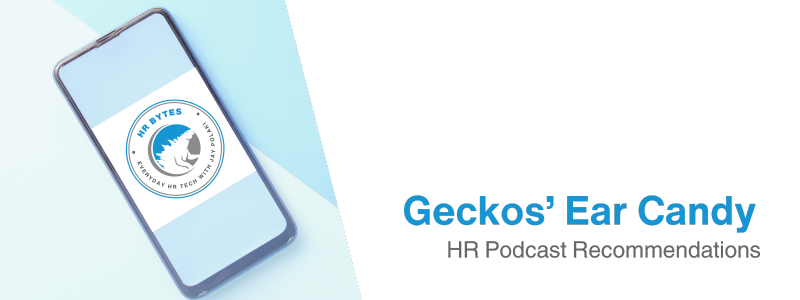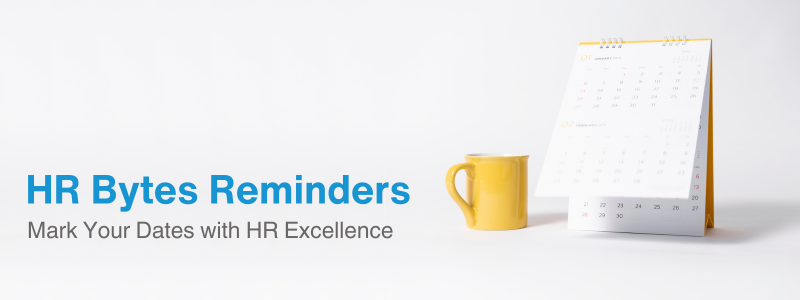HR BYTES NEWSLETTER
July 2024

Welcome to the July edition of HR Bytes, your essential update on the latest trends, insights, and developments in the world of work. This month, we look into the rising prominence of the Chief AI Officer (CAIO). Discover how AI is transforming talent acquisition and employee management, reshaping traditional HR practices. We also explore the ethical considerations of AI in the workplace, highlighting best practices for ensuring fairness and transparency. Join us as we navigate these exciting topics and more, providing you with the knowledge and tools to thrive in the dynamic HR landscape. Let's continue to learn, adapt, and succeed together!

Microsoft and LinkedIn released the 2024 Work Trend Index: three out of four people use AI at work
Microsoft and LinkedIn's 2024 Work Trend Index reveals that AI is rapidly becoming integral to the workplace. Based on comprehensive data, including a survey of 31,000 people across 31 countries, LinkedIn's hiring trends, Microsoft 365 signals, and insights from Fortune 500 customers, the report shows AI's significant influence on global work, leadership, and hiring practices. The use of generative AI at work has nearly doubled in the past six months, with a noticeable increase in professionals adding AI skills to their LinkedIn profiles. However, many companies still need a clear AI implementation vision, pushing employees to adopt AI tools independently. The report also highlights the economic potential of AI, predicting substantial GDP contributions, especially in regions like Southern Europe.
AI Adoption Surge: 75% of knowledge workers now use AI at work, doubling in the past six months, demonstrating its growing importance.
Employee-Led AI Use: Many companies lack a clear AI strategy, so 78% of AI users bring their own tools to work. This leads to potential risks but also showcases employee initiative.
Economic Impact: AI is expected to significantly boost economies, potentially adding $700 billion to the GDP of Southern Europe by 2030.
Skills Demand: A majority of leaders (66%) wouldn’t hire someone without AI skills. Yet, only 39% of users have received AI training from their employers, prompting professionals to seek AI education independently.
AI Power Users: Those who heavily use AI save over 30 minutes per day, find their workloads more manageable, and enjoy their work more. They are often supported by leadership and receive tailored AI training.
Hello, CAIO: Are You Ready for the Rise of the Chief AI Officer?
The rise of the Chief Artificial Intelligence Officer (CAIO) role comes as organizations increasingly adopt AI technologies. Leading companies like Dell and NASA are pioneering this trend, with many others quickly following suit. The CAIO plays a vital role in aligning AI strategies with business objectives, ensuring regulatory compliance, and spearheading innovation. Given the specialized nature of this role, competitive compensation packages are essential. As AI becomes more integral to business operations, the demand for CAIOs is expected to grow, though the role may evolve over time as AI becomes embedded in every aspect of work.
What Employees Aren’t Telling Their Bosses About AI At Work
Forbes delves into what employees need to disclose about AI at work to their bosses. It highlights findings from a recent Microsoft report, revealing that many employees hesitate to admit using AI technology in their most important tasks. The report suggests that over half of AI users are reluctant to disclose this information, fearing it might make them appear replaceable. This dynamic poses a challenge for managers aiming to encourage the adoption of AI in the workplace. Despite AI's potential productivity gains, employees may be wary of sharing their reliance on AI tools. The article also touches on the broader implications of AI in the workplace, including employees' preference for using their AI tools rather than company-provided ones.


White House Says Employers Should Do These 8 Things When Using AI at Work
The White House has outlined eight key practices for employers to follow when implementing AI in the workplace. These guidelines, while not legally binding, provide valuable insights for navigating AI-related risks and litigation. They include establishing an AI governance system, being transparent about AI use, responsibly handling worker data, protecting workers' rights, prioritizing ethics, empowering workers in AI processes, using AI to support workers, and assisting workers impacted by AI-driven changes. These recommendations emphasize the importance of ethical AI implementation, worker empowerment, and support amidst technological advancements.
Gender Diversity Momentum on U.S. Corporate Boards Stalls
The latest report from 50/50 Women on Boards shows that progress towards increasing the number of women on U.S. corporate boards is slowing down in 2024. Currently, women hold about 30% of board seats in the Russell 3000 Index, a slight increase from before. However, only 8% of these seats are held by women of color. The report predicts that at the current rate, it won't be until 2045 that we achieve an equal number of men and women on boards, and 20% representation of women of color. It emphasizes the need for renewed efforts to remove obstacles to fair representation in corporate leadership. Some industries have shown improvement, with utilities leading in gender diversity on boards. Companies with more diverse boards generally perform better, while those with less diversity often struggle with issues like decreased sales or mergers.

Unlocking Untapped Potential with Automation
In today's dynamic workplace, leveraging automation is crucial for HR professionals seeking to tap into new opportunities. Automation empowers HR teams to streamline processes, boost efficiency, and create tailored employee experiences from recruitment to retirement. This set of practical tips explores how automation can transform HR practices, providing insights into utilizing AI for predictive planning, implementing agile recruitment strategies, ensuring compliance, and more. By adopting these innovations, HR leaders can optimize workflows and drive strategic initiatives that align with organizational goals, fostering an agile and responsive workplace environment.
Here are some practical tips and tricks for HR professionals to unleash untapped potential using automation:
Personalized Employee Experiences: Automate communication and interactions throughout the employee journey—from recruitment to retirement. Customize messages, learning paths, and career development opportunities based on individual preferences and performance data.
Predictive Insights for Strategic Planning: Use AI and analytics to predict workforce trends, identify talent gaps, and optimize resource allocation. Equipped with predictive insights, HR leaders can proactively shape strategies aligned with organizational goals.
Agile Recruitment Strategies: Implement automated candidate sourcing and engagement tactics to build a robust talent pipeline. Leverage AI-driven assessments to match candidates with roles based on skills, cultural fit, and potential, ensuring swift and accurate hiring decisions.
Empower HR Teams with AI Assistants: Integrate AI-powered assistants to automate routine tasks such as scheduling interviews, handling FAQs, and managing leave requests. This empowers HR professionals to focus on complex problem-solving and strategic initiatives.
Enhanced Compliance and Risk Management: Automate compliance monitoring and reporting to mitigate risks associated with regulatory changes. Maintain data integrity and security through automated audits and alerts, adhering to industry standards.
Data-Driven Performance Management: Automate performance evaluations and feedback loops to provide continuous insights into employee productivity and developmental needs. Enable real-time coaching and mentoring based on actionable data.
Streamlined Onboarding and Offboarding Processes: Simplify onboarding with automated workflows that guide new hires through essential paperwork, training modules, and introductions to company culture. Automate offboarding to ensure seamless transitions and compliance with exit procedures.
Innovative Learning and Development Initiatives: Deploy AI-driven learning platforms to deliver personalized training programs aligned with employee career paths and skill development goals. Track progress, recommend courses, and measure ROI to optimize learning investment.
Culture Building through Automation: Use automation to reinforce organizational values and nurture a positive workplace culture. Automate recognition programs, feedback loops, and employee surveys to continuously enhance engagement and satisfaction.
Continuous Improvement through Feedback Loops: Implement automated feedback mechanisms to gather insights from employees on HR processes, policies, and initiatives. Use feedback analytics to drive ongoing improvements and responsiveness to employee needs.

We asked HR practitioners how to strike a balance between technology and keeping people at the forefront of their decisions. Here’s Joyeta Samanta’s take on it!
I wholeheartedly agree that integrating technology in our HR practices should enhance and reinforce our commitment to human-centric approaches rather than diminish it. Our role as stewards of organizational culture and employee well-being is to ensure that technology complements, not replaces, the essential human elements of our work.
We are dedicated to fostering an inclusive and engaging workplace where every employee feels valued and understood. Technology and AI are tools that can support us in these efforts, allowing us to focus more on strategic and personal interactions that are crucial for employee development and retention. It is imperative to remember that while technology can help us identify trends and pinpoint issues through data analysis, it is the personal, empathetic approach in our follow-up that truly matters. For instance, if AI helps us detect a pattern in employee feedback indicating a need for better work-life balance, the subsequent discussions and solutions should be personalized and considerate of individual circumstances.
In our journey to integrate technology into HR, we must use these tools to amplify our human-centric values, ensuring that technology helps us connect with, understand, and support our employees more effectively than ever before.

3 critical HR challenges that AI hasn’t solved yet
Despite advancements in AI, three critical HR challenges remain unsolved by technology. First, developing and executing a successful hybrid work model is complex. HR leaders need to balance data and human insights to determine the best mix of in-person, hybrid, and remote work arrangements. Second, supporting diversity, equity, and inclusion (DEI) initiatives relies heavily on human wisdom and commitment. AI cannot address the nuanced and dynamic nature of DEI efforts, which are driven by human voices and leadership. Third, engaging Gen Z workers presents unique challenges that require human understanding and adaptability. Gen Z values work-life balance, tech-savviness, ethical practices, and growth opportunities. Addressing these needs goes beyond what AI can offer. In 2024, while AI can support many HR processes, it is essential to recognize that some of the most pressing HR issues still require human expertise and empathy.
Doing Stuff with AI: Opinionated Midyear Edition
Ethan Mollick shares some fun ways to dive into AI in this recent blog. He suggests starting with playful activities like making music or creating games using AI tools. It's a fantastic way to see what AI can do while having fun. But don't stop there! Ethan also discusses using AI for serious stuff like getting advice, generating ideas, or writing reports. It's like having an intelligent helper at your side! He mentions advanced AI models like Claude 3 Opus, Gemini 1.5, and GPT-4, which can do much more than before. These models can even connect to the internet and create images! So, whether you're into fun or serious tasks, AI can lend a hand in making things easier and more exciting.
Buried with Work? Prompt AI to Handle Tedious Tasks
Feeling overwhelmed by tedious tasks at work? Cathryn Lavery, CEO of BestSelf Co., recommends using AI tools like ChatGPT as your personal assistant to handle mundane chores. By delegating low-level tasks such as drafting emails, proofreading, brainstorming, and creating documents to ChatGPT, you can free up your time and mental energy for more important responsibilities. Lavery emphasizes the importance of crafting detailed prompts to get better responses and tailoring the AI-generated content to fit your style. She offers tips for effectively using ChatGPT: assign it a clear role, give it specific goals, provide context, and be detailed in your prompts to get better responses. While Lavery tweaks AI-generated content to sound more personal, she highlights that AI can handle up to 90% of the initial work.
Expensive AI pitfalls and how this expert helps HR avoid them
How organizations are using artificial intelligence (AI) to improve various aspects of their human resources (HR) operations. It highlights four main ways AI is being utilized: creating AI ‘employees’ to assist with tasks and provide feedback, using AI to tailor communication styles, implementing personalized learning pathways for employees, and utilizing AI-powered tools for feedback management. Overall, it emphasizes how AI is revolutionizing HR processes, making them more efficient, personalized, and supportive for employees, ultimately contributing to organizational growth and innovation.
How AI can enhance HR compliance
AI has the potential to significantly enhance HR compliance by automating and streamlining various tasks, but its implementation requires careful planning and consideration of legal and ethical issues. To effectively adopt AI, HR teams should identify specific tasks where AI can support compliance, such as monitoring regulatory changes, managing policy documentation, and flagging compliance risks. Selecting the right technology tailored to business needs is crucial, as is addressing data privacy and mitigating bias. A gradual approach to AI implementation is recommended, starting with a few functions to test and adjust the technology. Training staff, maintaining human oversight, and developing robust policies and guidelines for AI use are essential to ensure ethical and compliant use. Continuous learning and skill development for HR professionals are also necessary to effectively integrate AI.
How to Sidestep Pitfalls in HR Tech Implementations
The challenges and strategies involved in successfully implementing new HR technology systems. It emphasizes that despite the lengthy process of selecting and contracting with technology vendors, the real challenges begin during implementation. Many organizations face issues such as inadequate user training, missed timelines, and resource constraints, which hinder the smooth adoption of new systems. To overcome these pitfalls, the article recommends involving stakeholders from across the organization, prioritizing change management, avoiding over-negotiation with vendors, setting realistic timelines, and fostering partnerships rather than transactional relationships. These steps are crucial for ensuring effective HR technology implementations that meet organizational needs and enhance user satisfaction.


We are tuning in to the HR Works Podcast hosted by Bianca N. Herron. The mission of HR Works is to provide clear, relevant, actionable information on topics that matter to HR professionals through engaging and insightful interviews with experts and thought leaders.

We are excited for Season 4, Episode 3 of our very own HR Bytes,
where we share stories of HR trailblazers redefining HR with a global mindset and local impact. This month, our guest is Ify Etuokwu.
Tune in to our latest Season 4 Episode 3 on your favorite podcast channel and YouTube.
Check out our most recent conversations on your favorite podcast channel or YouTube! https://hrgeckos.com/podcast.html.

We found some new reads to stay ahead of HR and the future of work trends! What is on your HR bookshelf this month?

The AI-Savvy Leader: Nine Ways to Take Back Control and Make AI Work by David De Cremer (June 2024)

HR - 'Seen & Unseen': Untold Stories by Dr. Pon Mohaideen Pitchai (March 2024)

Autonomous Transformation: Creating a More Human Future in the Era of Artificial Intelligence by BJ Evergreen (June 2023)

The AI Revolution: Transforming Operations Management: Shaping the Future of Industry by Unleashing the Power of AI in Operations Management by Dean H. Stanton (November 2023)
Curious about the future of HR tech?
Dive into the future with our HR Bytes Newsletter, your source for cutting-edge HR Tech insights
We’re thrilled to share our HR Bytes Sticker!
Be part of the HR Bytes community.
Share your thoughts and claim your sticker here: https://tinyurl.com/3a4ecx62
Stay tuned, stay inspired!

Hey, HR pros, here are the key dates to keep on your radar in July, ensuring a smooth and successful HR journey!
July 31 Pay and Submit POCRI Fees – file form 720 (Self-Insured Health Plans Only)
July 31 Forms 5500 and 5558 Filing Deadline (for calendar year plans)
IRS Form 5500: Report information about a 401(k) plan’s financial condition, investments, and operation to ensure compliance with government regulations.
IRS Form 5558: Request for an extension of 2 ½ months for additional time to file employee plan returns.
July 31 Compliance check. This is the time to review benefits notices or issues as required.

